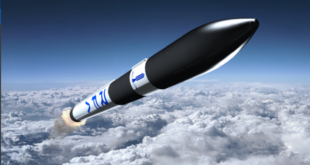
In the EU project “High Performance AlexandriteCrystals and Coatings for High Power Space Applications” (GALACTIC), Laser Zentrum Hannover (LZH) aims to develop a solely European supply chain for space-qualified high-performance laser crystals made of Alexandrite with the partners Optomaterials S.r.l. (Italy) and Altechna Coatings UAB (Lithuania). These laser crystals are to be used in earth observation satellites in space.
Laser systems in earth observation satellites generate data for the analysis of the earth’s atmosphere and surface. So far, laser crystals made of neodymium-doped yttrium aluminum garnet (short: Nd:YAG) have been used. The emitted wavelength of Nd:YAG crystals, however, cannot be tuned. Alexandrite crystals are tunable by nature and also superior to Nd:YAG crystals in other basic properties such as thermal conductivity and breaking strength. Therefore, the European Space Agency (ESA) is currently investigating whether these crystals can replace YAG crystals in the future.
However, the prerequisite for this is the sufficient availability of space-qualified Alexandrite laser crystals. The USA still dominate the market for Alexandrite laser crystals, but they are already available as an industrial product in Europe. The partners in the GALACTIC project now want to bring the Technology Readiness Level (TRL) of European Alexandrite laser crystals for high-performance applications in space from currently TRL 4 to
TRL 6.
This announcement was made on 2 April 2020.





